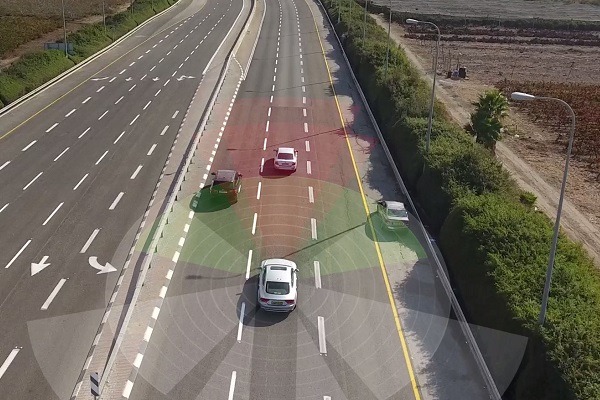World leader in vision-safety technology Mobileye, whose collision avoidance systems are distributed in Ireland by ADAS.ie, recently picked out the top 4 ADAS features to look out for in a car.*
Firstly, what are we talking about? ADAS stands for Advanced Driver Assistance Systems. These are electronic features that can make your car safer and easier to operate out on the road, using sensors to support your driving in the face of the many dangers and hassles around you.
There are lots of them. And enough acronyms around them – from ABS to ZEV – to confuse even the tech-savviest of drivers. So, what are the most important ones to look out for?
Lane Departure Assist (LDA)
Research suggests that 40% of fatal crashes in the US can be attributed to single vehicles departing the highway. Drowsiness and driver distraction are the most likely causes of a car unintentionally veering out of lane. The dangers it poses to other road users are evident.
Lane Departure Assist monitors the road ahead, detecting if the vehicle is veering out of lane, and (if necessary) gently guiding it back into its lane. ADAS.ie provides Lane-Departure Warning technology from Mobileye as a retrofit, which instantly emits a visual and auditory warning, prompting the driver to refocus his or her attention to the wheel.
Automatic Emergency Braking (AEB)
Many drivers fear not braking quickly enough when a collision is imminent – with good reason, as far too often this is the case. That’s where Automatic Emergency Braking comes in. It automatically applies the brakes to avoid a collision – reacting much more quickly than a human driver ever could. A recent survey cited AEB as among the most desirable driver-assistance technologies on the market.
It’s based on the same idea as Forward Collision Warning (FCW), which is available through ADAS.ie and which detects and prevents an imminent collision by warning the driver to take action. Forward collision warning systems plus AEB were found to be capable of reducing rear-end collisions by 50 percent and resulting injuries by 56 percent.
Adaptive Cruise Control (ACC)
Adaptive Cruise Control makes automatic adjustments to the vehicle’s speed while in cruise control to adapt to the flow of traffic. If an ACC-enabled car comes up on slow-moving traffic, the technology will decelerate the vehicle, then bring it back up to the set speed once the way is clear. This is both a safety and convenience feature.
Traffic Jam Assist (TJA)
Traffic Jam Assist is essentially Adaptive Cruise Control combined with Lane-Centering, which automatically steers the vehicle to help it stay centered between the lane markings. TJA is most helpful when encountering heavy traffic, managing brakes and steering in stop-start traffic. That can be a boon for drivers who face heavy congestion on their daily commute.
But what if you’re not thinking of changing your car?
With ADAS.ie, you can enjoy key collision avoidance features, which are available for fitment on existing vehicles. These include Pedestrian Collision Warning, Headway Monitoring Warning, Intelligent High-Beam (lowers/ raises high beams without inconveniencing oncoming vehicles) and Speed Limit Indication, which alerts the driver if the vehicle exceeds the speed limit posted.
*https://www.mobileye.com/blog/buying-a-new-car-here-are-four-adas-features-to-look-for/

